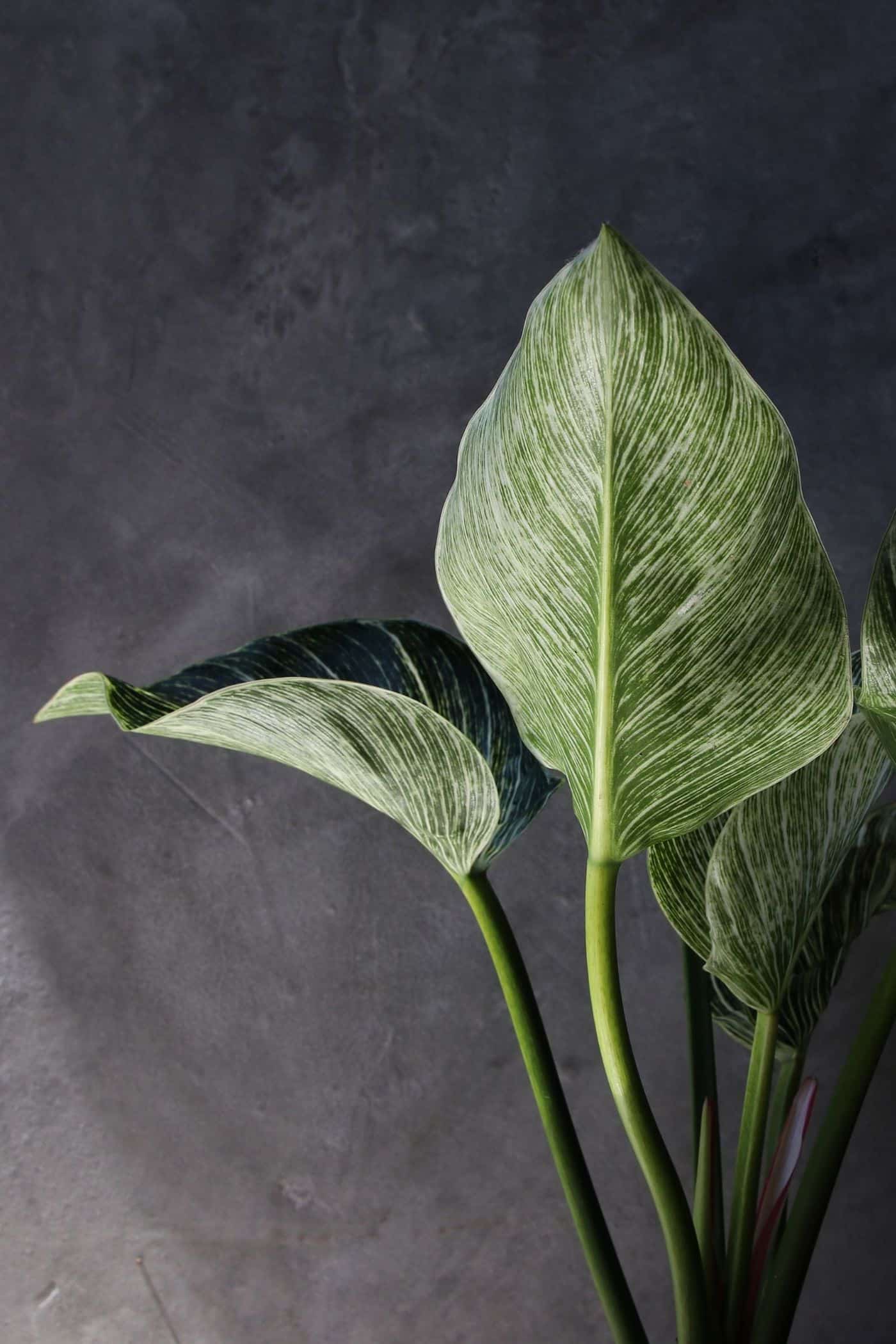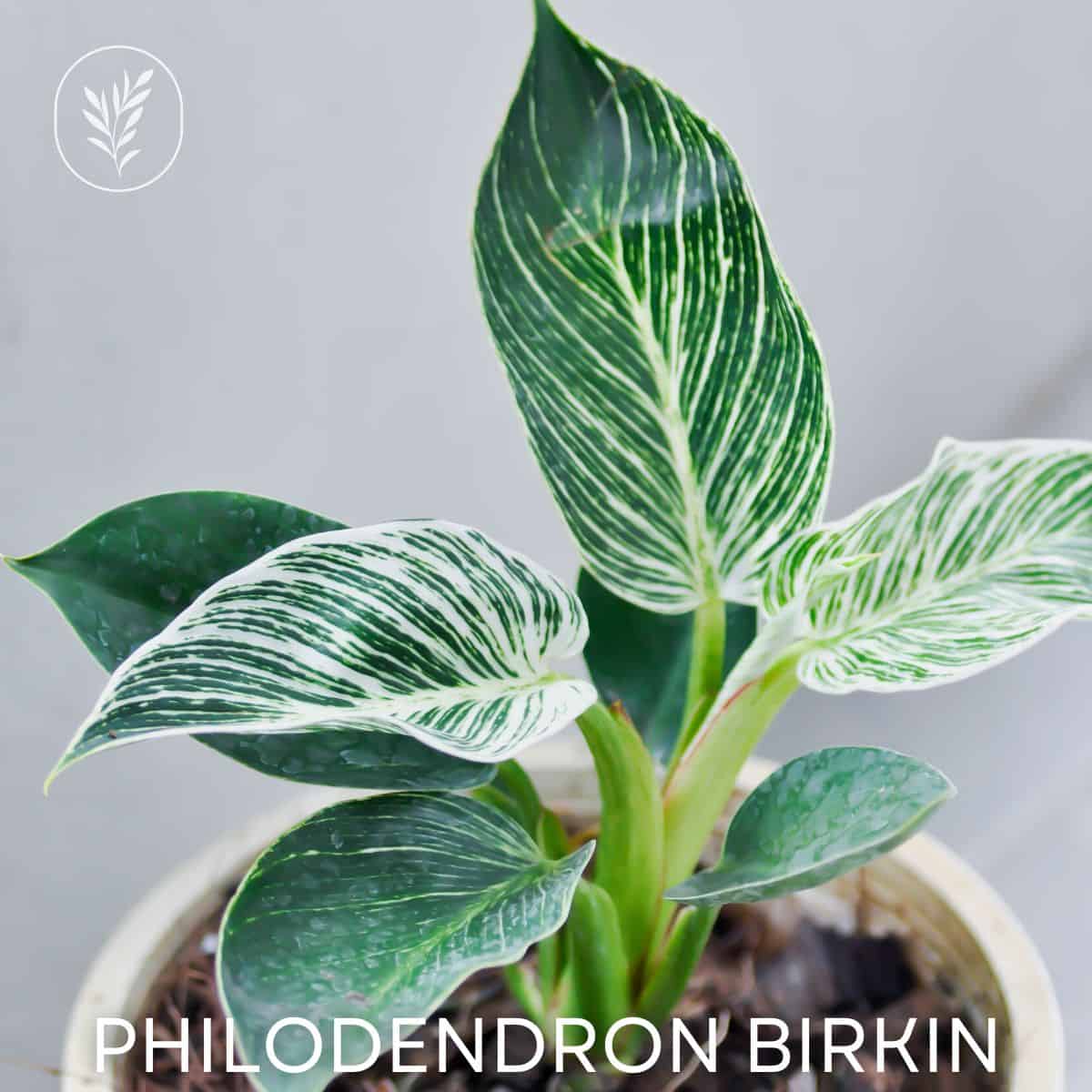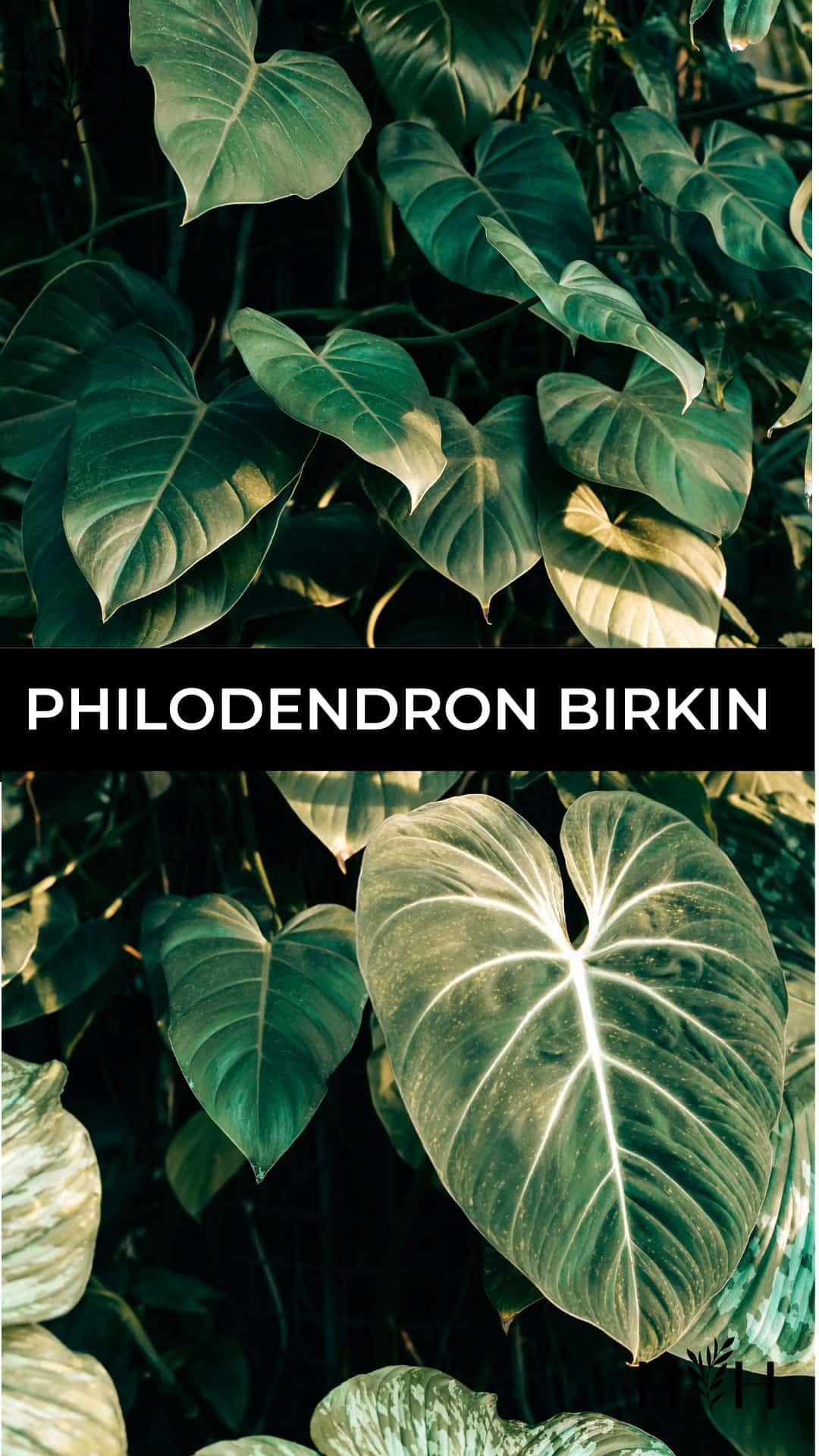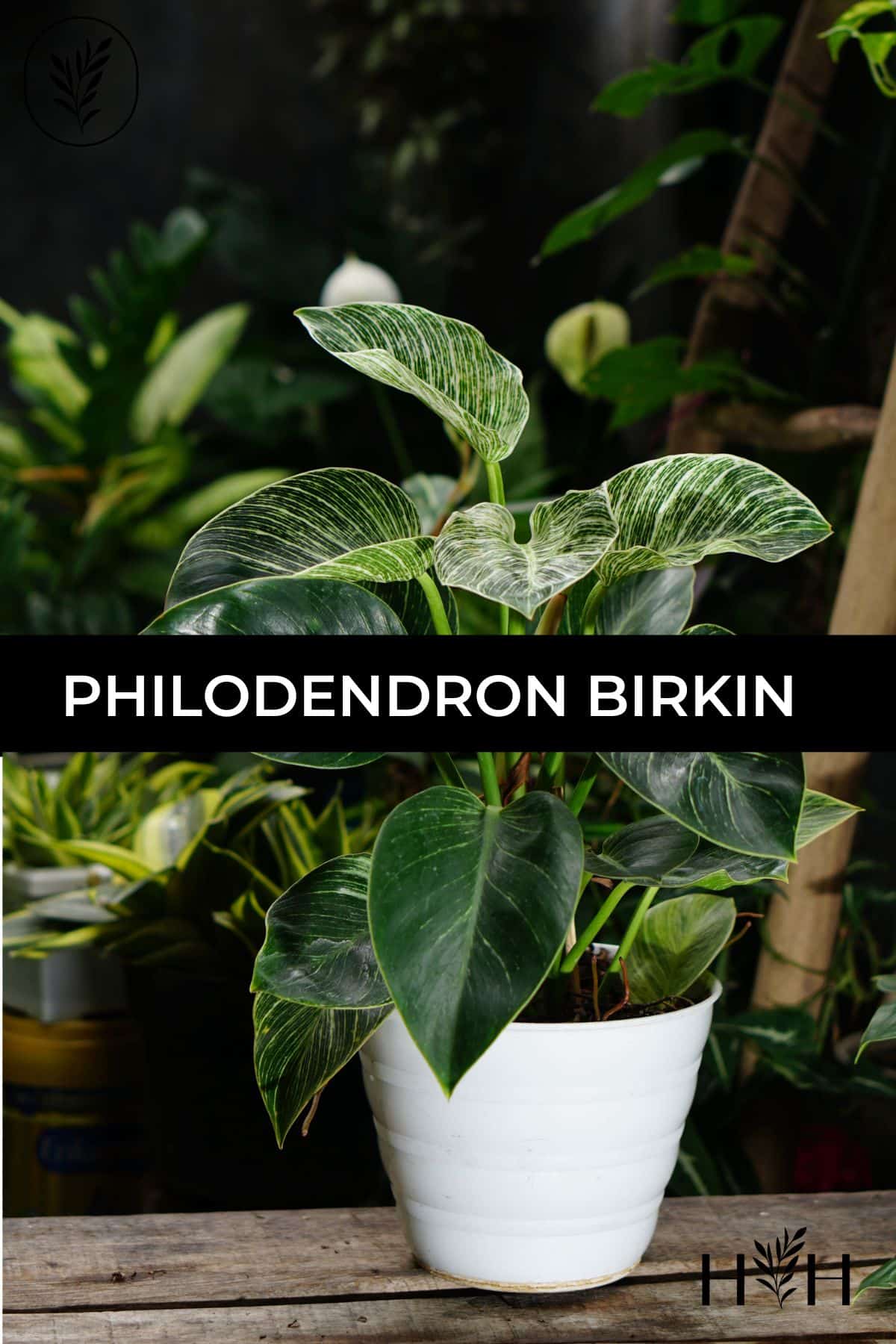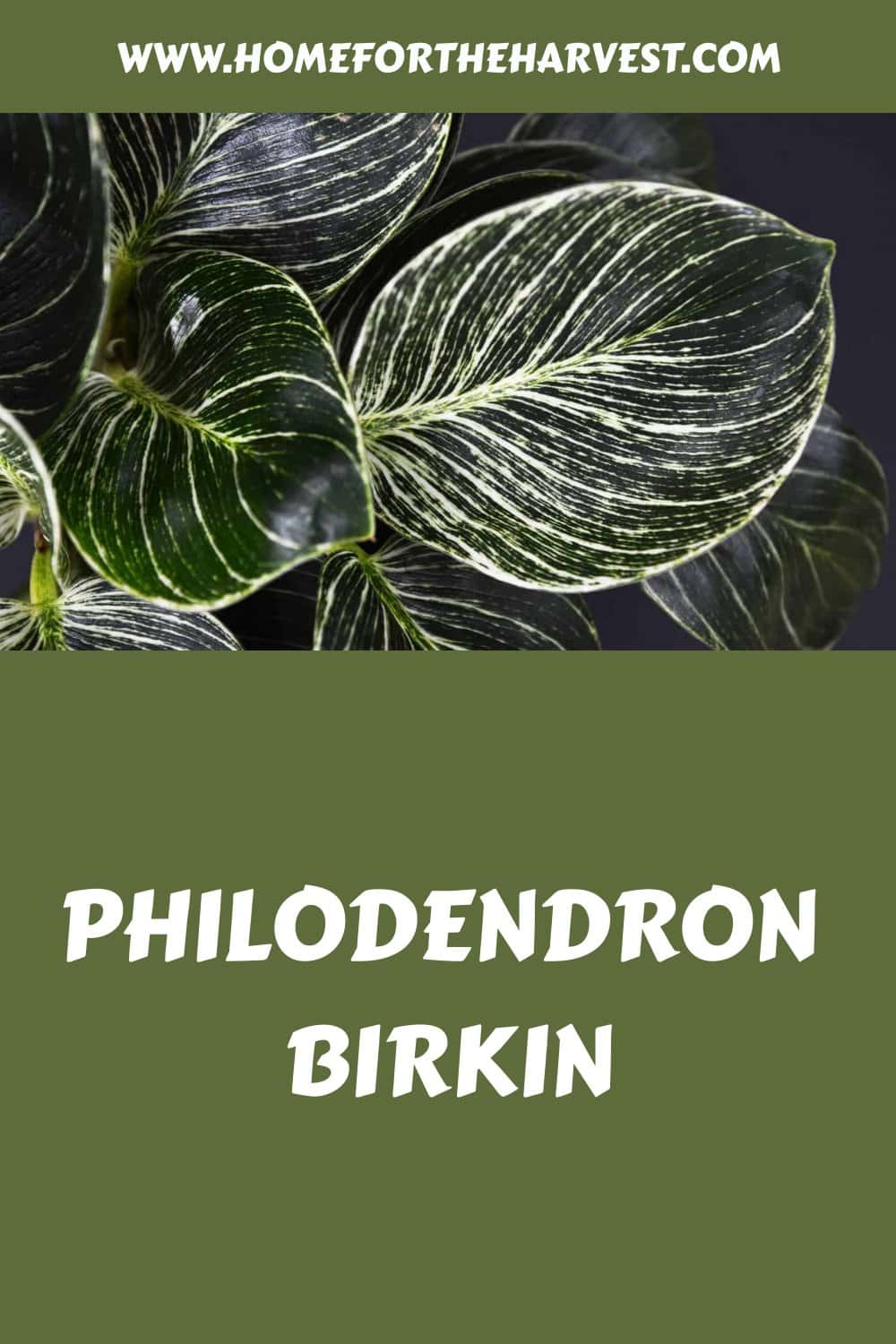The Philodendron Birkin is one of the most popular houseplants to add to your plant family.
Philodendron Birkin is an ornamental houseplant in the Aroid (Araceae) plant family known for the unique white pinstriping down its leaves. This lovely plant is easy to care for and makes a lovely addition to any houseplant collection. The Birkin variety of Philodendron is a fairly new introduction to the houseplant market and is just starting to arrive in larger stores.
Read on to learn more about the origins of this plant, how to raise it, how to care for it, and much more. You may find it’s the perfect new plant to add to your home!
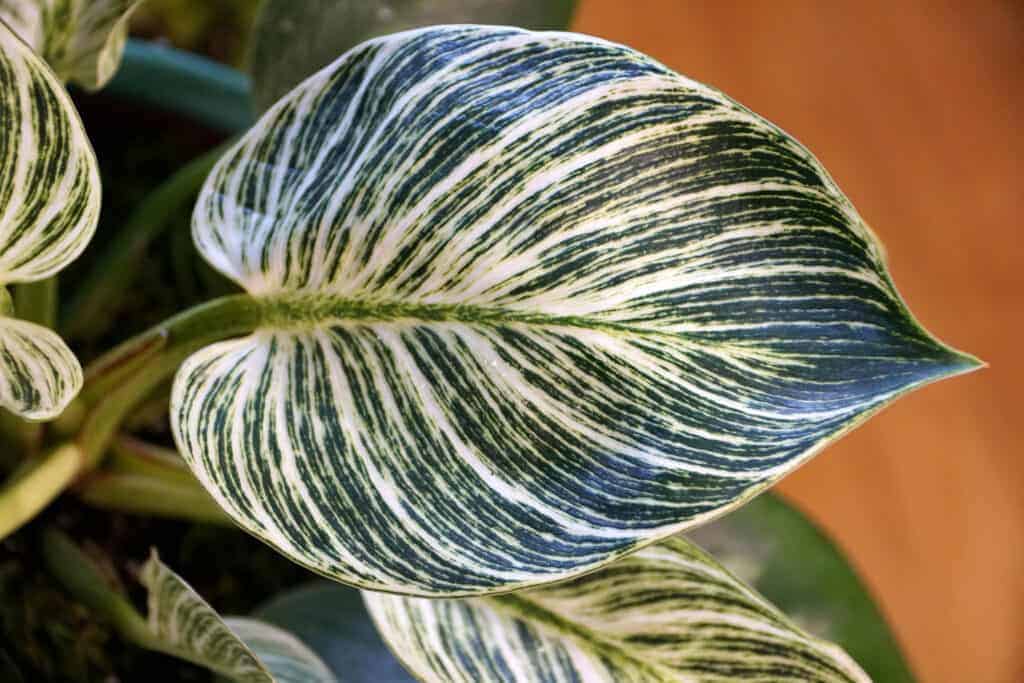
Philodendron Birkin basics
Philodendron Birkin is a hybrid plant from the Aroid (Araceae) family. It is a straight, self-supported plant (meaning it does not need any kind of extra support to grow). The Philodendron was first discovered sometime in the 1600s. This led to the subsequent discovery of over 489 different species of Philodendron that are most commonly found in humid, tropical climates.
Philodendrons are easily recognizable by their bright glossy leaves. Though they often grow in the tropical wilderness, they are most commonly used as houseplants and are generally easy to grow.
Birkins came into being because of a rare mutation with the cells in a Rojo Congo Philodendron. This mutation is commonly known as a spontaneous Chimeric mutation. Plants with Chimeric variegation have certain areas of cells which cannot produce green chlorophyll pigment, hence the white stripes on Birkin. The decreased amount of leaf area with chlorophyll means that Birkin philodendrons need more light than their un-variegated counterparts.
The leaf of the Philodendron Rojo Congo that had mutated was quickly propagated from the mother plant and grown on its own. Thus was the Philodendron Birkin brought into existence! Because of its incredibly unique origin, the Birkin variety of Philodendron is nowhere to be found in the wild. As you can see, the propagation went well, and the Birkin has remained a popular philodendron, especially for home gardeners.
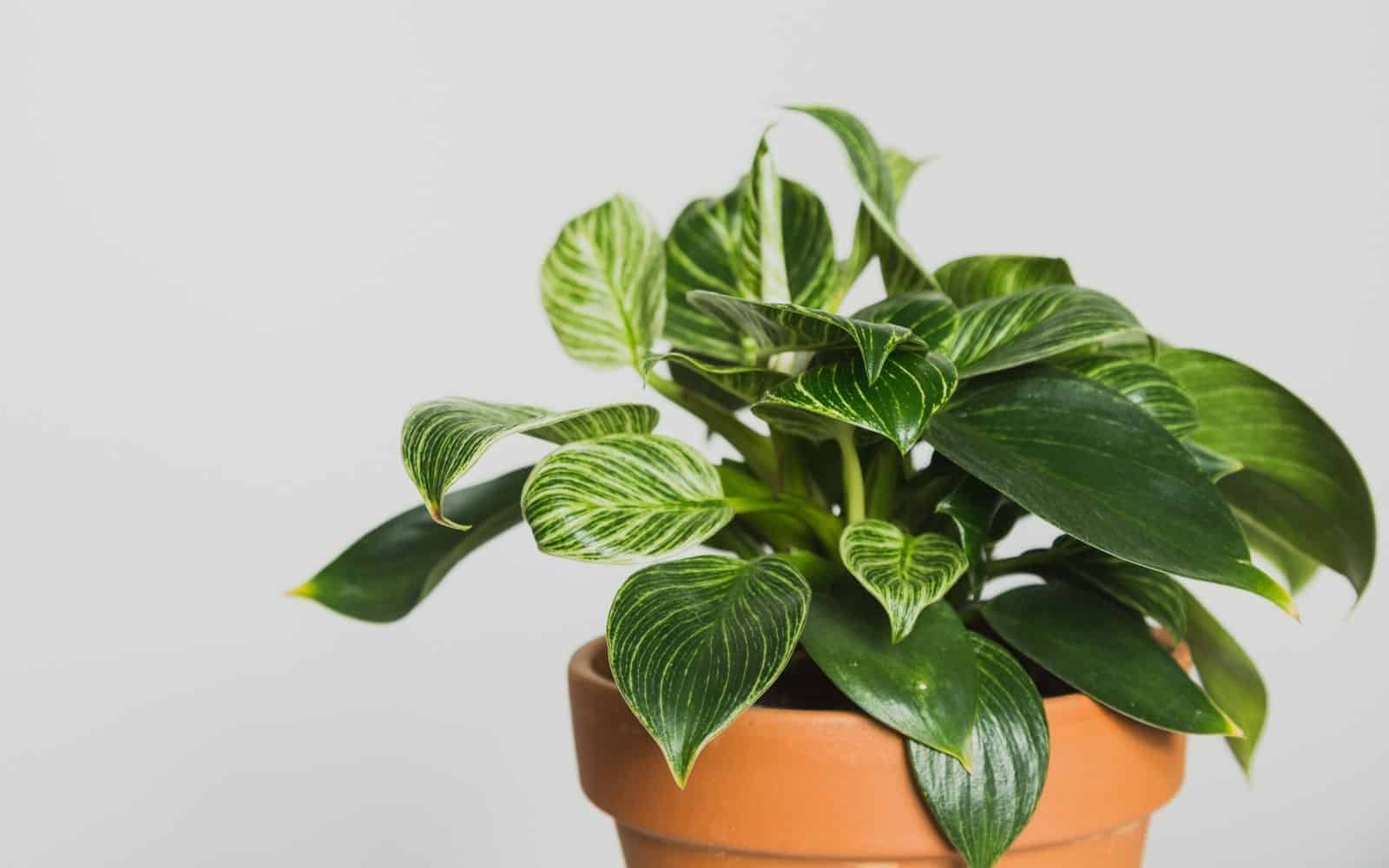
Before you head out to plant one, remember that all Philodendron Birkins are susceptible to mutation. Not one plant is identical to another, and because they are grown via tissue culture, each Birkin could very well mutate back into a Philodendron Rojo Congo with regular foliage. You will know this has happened if, instead of growing green leaves with white pinstripes, your plant starts growing solid burgundy-green or cream-colored leaves. Philodendron ‘Rojo Congo’ is a hybrid cross of Philodendron ‘Imperial Red’ and Philodendron ‘Tatei’ bred in Florida.
Growing Philodendron Birkin
Philodendron Birkin is a pretty slow-growing plant that can get up to three feet tall and three feet wide. As mentioned before, Philodendron Birkin is a self-heading plant, which means it is a non-climbing, self-supporting plant. Because this plant is not overwhelmingly large, it can easily be positioned on your desk or tabletop without getting in the way.
Because Birkins are so slow-growing, there is a good chance you might never have to repot it. When it comes down to it, Philodendron Birkins are extremely easy to care for and they do not require much fuss. As long as you are willing to put in just a little bit of time and effort, you will likely find that your Philodendron Birkin is thriving.
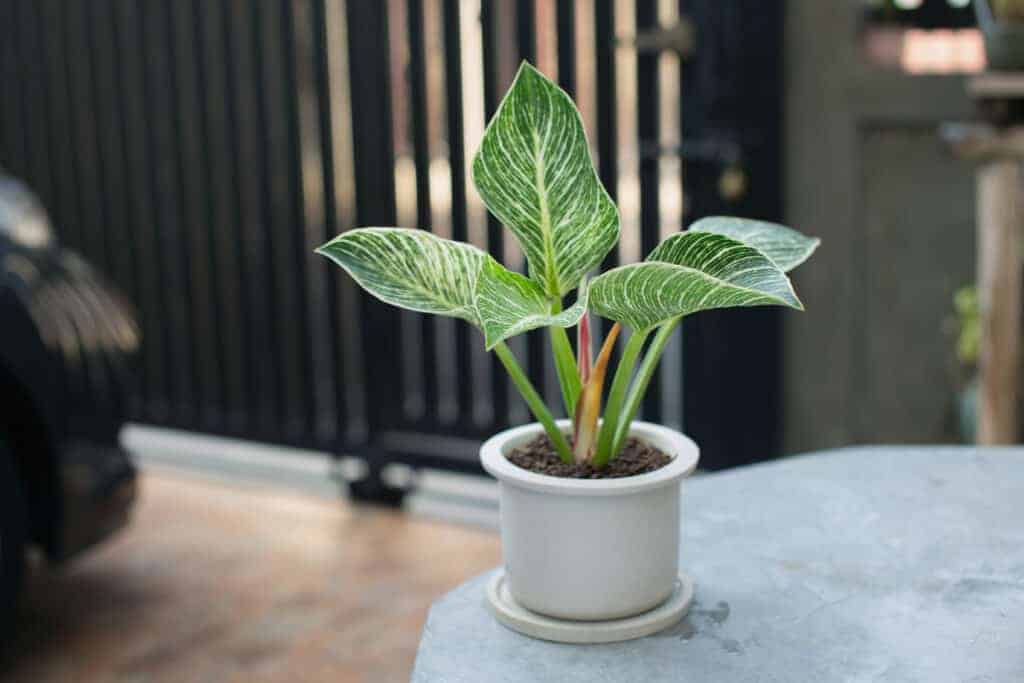
Caring for Philodendron Birkin plants
Now that you know a little more about Philodendron Birkin, you probably want to know how best to grow it and take care of it. Here are some basic tips that will get you started.
Lighting requirements for Philodendron Birkin
Philodendrons are tropical plants that usually grow in warm, humid environments below a tree canopy. Philodendron Birkin does best in medium to bright indirect sunlight. Areas with medium indirect sunlight tend to cast a soft/light shadow. Philodendrons generally do not like bright sunlight unless they are grown in cooler climates without harsh sunlight. Plants with white variegation like Birkin are particularly vulnerable to sunburn.
You might be worried about where to put your Philodendron Birkin. What if you do not have a spot with enough natural, yet indirect, sunlight? Fortunately, Philodendron Birkin thrives in natural light, but it can also thrive under fluorescent or LED lights. Philodendron Birkin grown indoors will likely benefit from artificial light from a plant light.
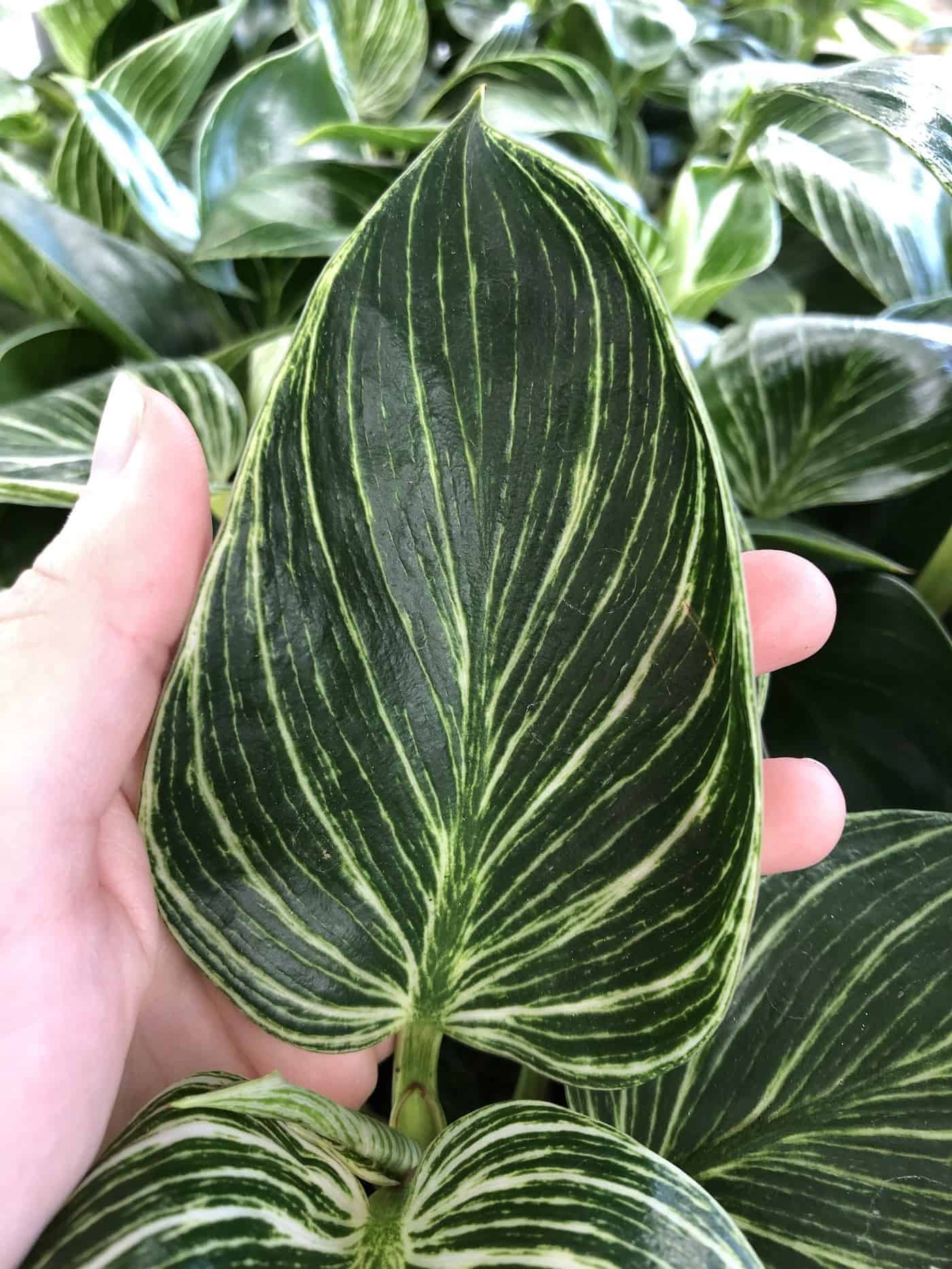
Humidity levels for Philodendron Birkin
As far as humidity is concerned, Philodendron Birkin is tolerant of a fairly wide range. It is usually the happiest in average to above-average humidity levels.
Living in an area with particularly dry air? Not to worry! The most effective way to raise humidity levels is with a humidifier. You can use a regular ultrasonic mist humidifier or opt for a specialty humidifier from a plant store. If all else fails, you can also try grouping your plants together to create a mini ecosystem.
Best potting soil for Philodendron Birkin
Pay close attention to the type of soil you are planting your Philodendron Birkin in. The soil has to be rich and full of nutrients to keep your plants happy. You will want to choose loose soil, though not too loose because it still has to be able to retain a healthy amount of water. Keep in mind that it can’t retain too much water though. You don’t want to have to deal with root rot or fungal growth later on. Use fresh potting soil to repot your Philodendron Birkin to avoid transferring soil-borne diseases.
If you are not sure what kind of soil to buy, you are almost always safe with sphagnum peat moss-based soil or coco-coir soil. Peat moss is remarkably airy and coarse-textured. This means it can retain water, but the aeration in the soil will drain properly which will keep your Philodendron Birkin completely safe from root rot. You can also mix it with perlite if you want great results.
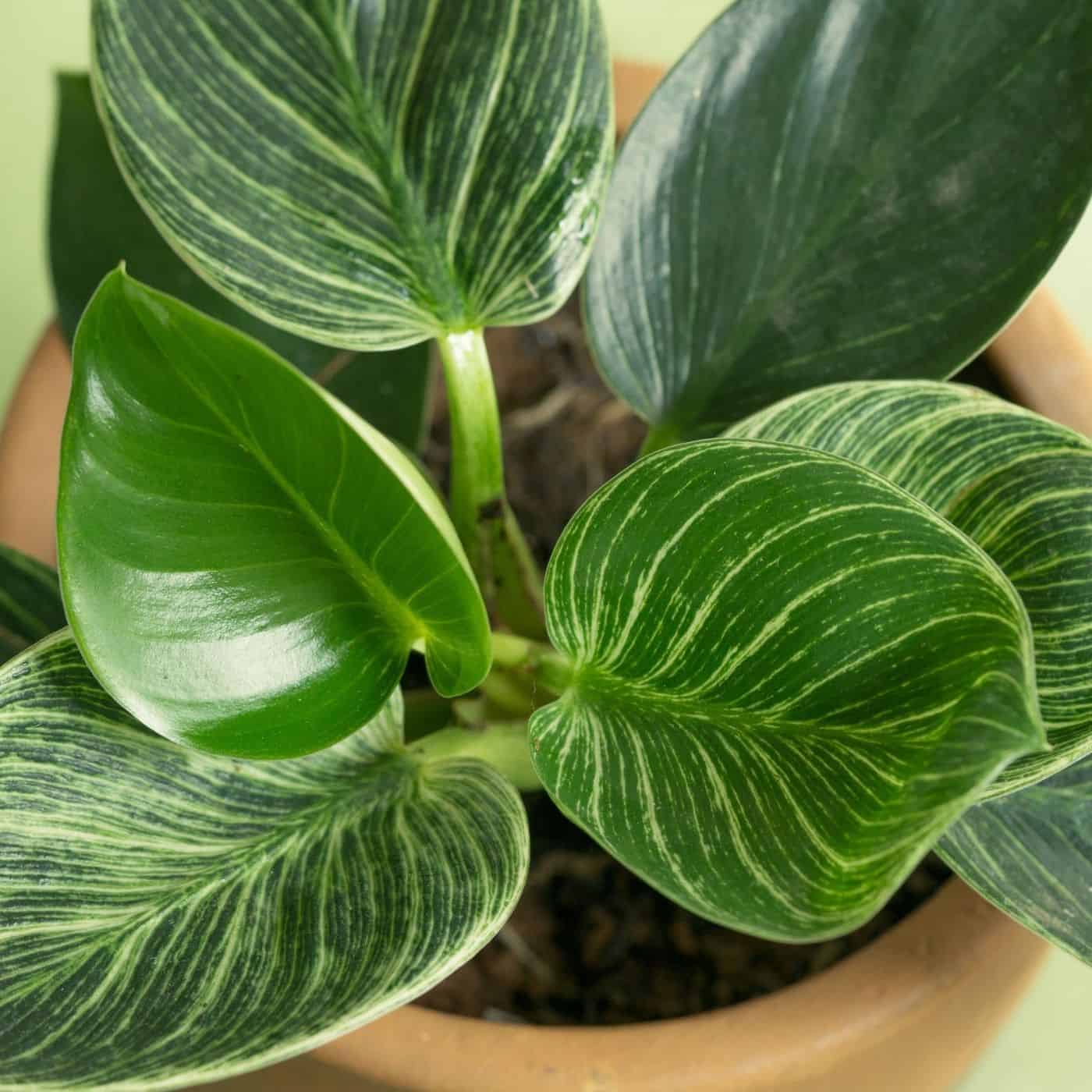
Watering Philodendron Birkin
Philodendrons do like moist soil more than some other houseplants. But just like most of the other members of the Philodendron family, Birkins are susceptible to overwatering. To avoid overwatering, you must ensure that the top 1-2 inches of soil are dry before watering again. Don’t keep the plant sitting in a constant puddle of water.
Philodendrons can typically survive periods of drought just fine, but underwatering will likely kill them if it goes on for too long. Be as careful as you can with the watering of your Philodendron Birkin. Constant water and it dies. Too little, and it won’t grow as well as it could otherwise.
Fertilizing Philodendron Birkin
Philodendron Birkins do not typically require a lot of fertilizing but will require a bit of added nutrition if grown in a container outside their natural ecosystem. If you choose to use fertilizer, apply it only during the spring and summer months. Use a mixture that is tailored specifically to indoor plants and carefully follow the dosage instructions (you should avoid using more than is recommended). Be careful not to use too much fertilizer because it could severely damage the roots.
Pruning Philodendron Birkin
As far as pruning goes, there really isn’t much to be done other than removing dead stems or leaves. As long as you keep the dead parts cut off and remove any bits of dead foliage from the soil surface, your Philodendron Birkin will grow and reach its full potential.
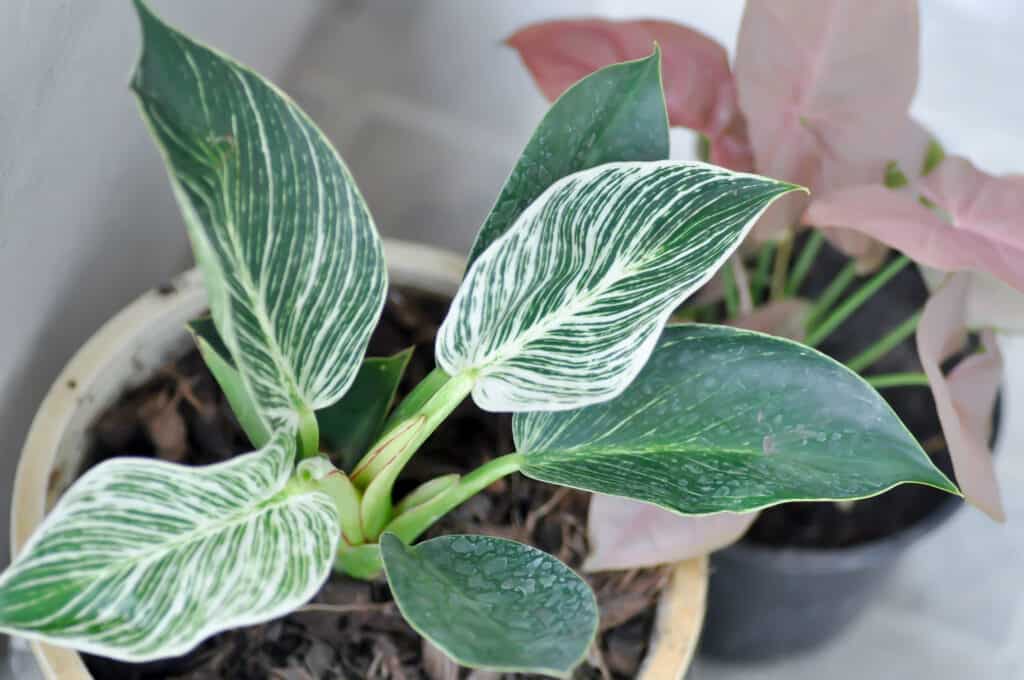
Repotting Philodendron Birkin
As mentioned before, Philodendron Birkins are fairly slow-growing plants which means they may not ever need to be repotted. However, if the need does arise at one time or another, here’s what you need to do.
You might be asking, why is repotting ever necessary? If you start to notice your plant pot getting swollen or inflated in parts, that probably means your plant is becoming root-bound. This means that your plant’s roots have become severely tangled and have started to grow into a single, dense mass. This will prohibit your plant from growing properly and if it becomes bad enough, it might even die.
If the roots are the problem, you will want to choose a new pot that is several inches bigger than the last one. This will give your Philodendron Birkin plenty of room to grow but it will not be too big for the plant. Planting in an oversized pot will make it that much easier for you to overwater because a huge pot will retain a lot more water than a perfectly sized one will.
When removing it from its old pot, be careful not to damage any of the roots. Try to untangle the roots as much as possible and carefully put the plant into its new pot. Be diligent in watering and giving it light, especially right after moving it to another pot. If you are careful to take the best care of it that you can, your plant should survive the move just fine.
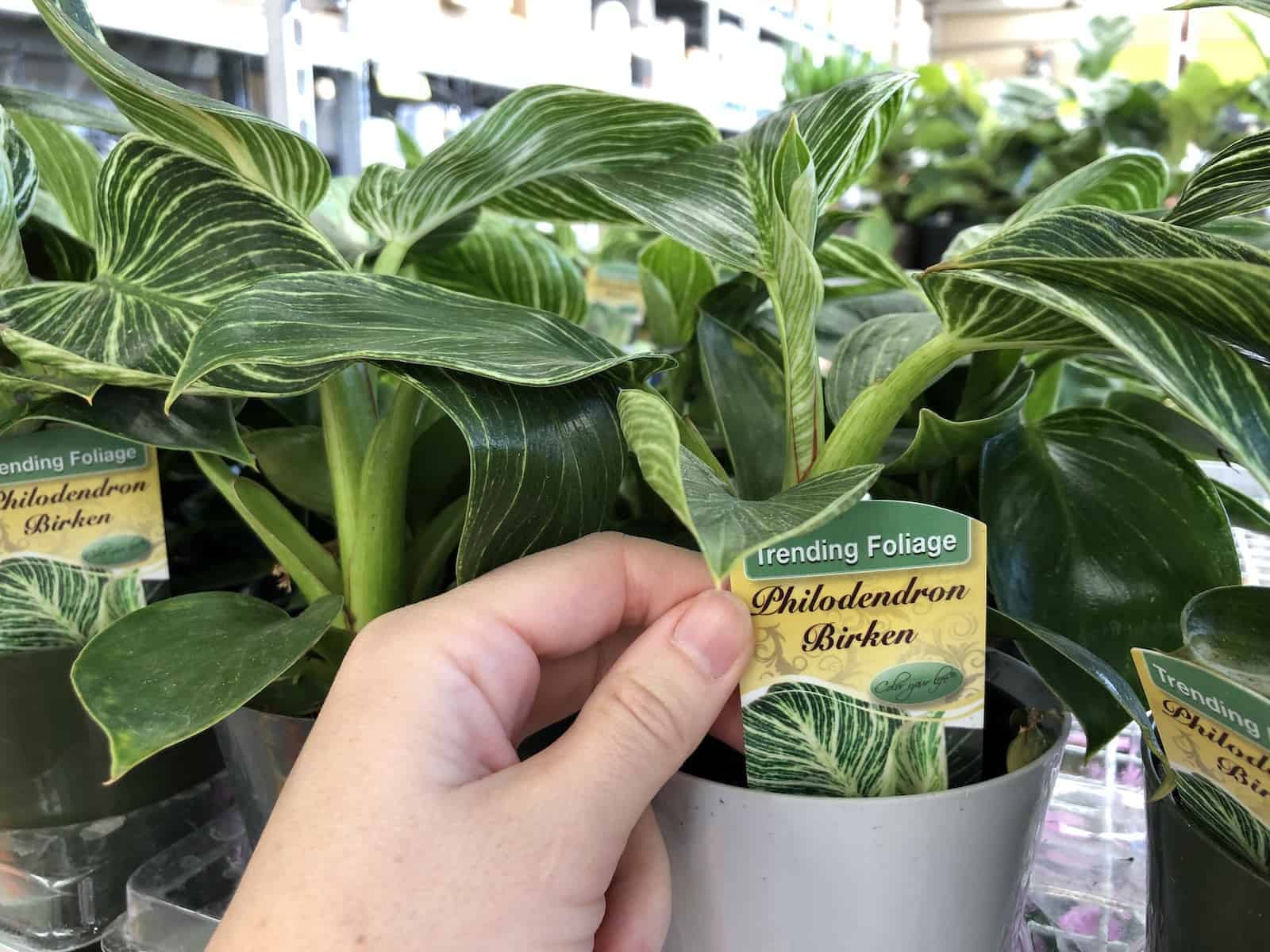
Propagating Philodendron Birkin plants
When propagating your Philodendron Birkin, make sure to cut in a healthy area. If you fail to do so, you could damage your plant irreparably. You also want to make sure this area has at least one node (a new stem joint) so it can grow back after being cut. Make your cut on a more mature section of the plant so it will grow back rapidly.
When you cut the plant, use clean scissors or shears to avoid passing dirt and infection along to the plant, which could then kill it (or make it sick at the very least). Make your cut in a diagonal direction which will increase the cutting surface. You will want to cut off any lower leaves because if you’ve got a new cut sitting in water for several weeks, any leaves left sitting in the water will rot and make the pot smell bad.
Put all the plant cuttings into containers filled with clean water. Make sure the nodes are under the water so they will start growing roots. Put the new cuts in a place with bright but indirect sunlight. If you are unsure about whether your plants are getting enough light, consider using a light monitor to measure it. If you need more, you can always supplement it with fluorescent or LED lights too.
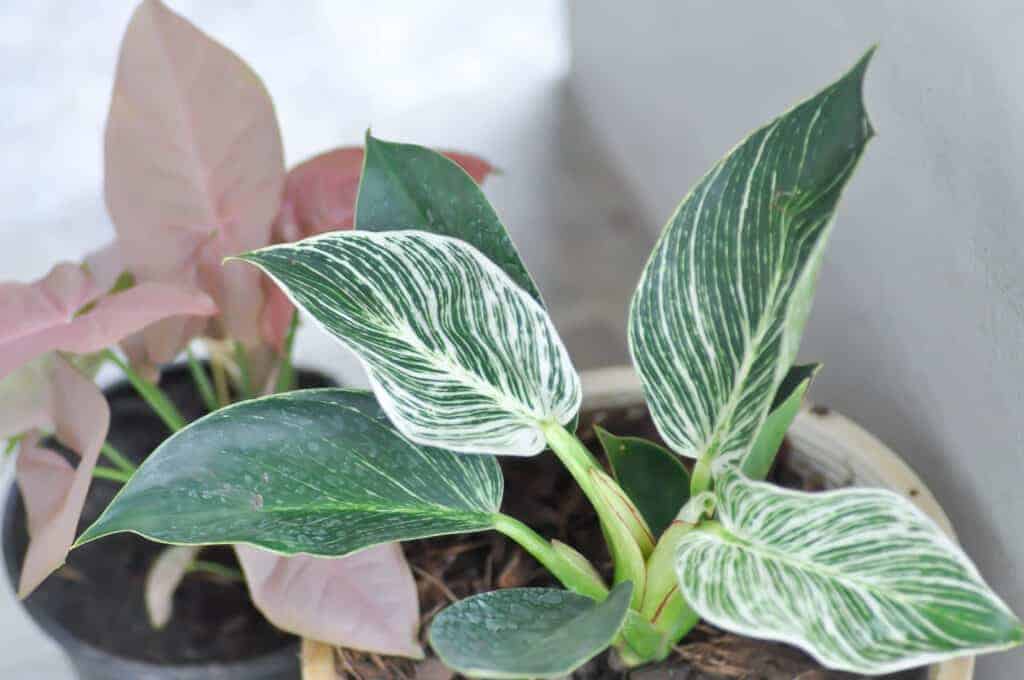
Problems & pests growing Philodendron Birkin
Just like other plants, Philodendron Birkin has its fair share of problems and pests. Here are a few you may want to know about.
Thankfully, Philodendron Birkin is fairly resistant to most pests, but it does occasionally experience problems from thrips, mealybugs, and spider mites. The best way to deal with it is to use a neem oil solution or a quality organic pesticide. Apply the pest-control solution to the Birkin once a week to get rid of the pests.
The moment you start to notice signs of a possible infestation, you will want to isolate the affected plant(s) as soon as you can. This will keep the insects from spreading to the rest of your plants. Signs of pests could include brown, yellow, or holey leaves. Prepare and apply the neem solution/organic insecticide as soon as you can to prevent any further damage.
Most diseases that affect Philodendron Birkin are purely fungal diseases. Fungal disease (often in the form of root rot) is most commonly caused by overwatering the plant. If the roots sit in water for too long, they will start to grow fungus and mold which could quickly kill it. If your plant’s leaves start to get yellow or brown and begin drooping, this is a sure sign that it might be suffering from root rot.
To nurse your affected Birkin back to health, cut off all the dead or dying leaves. If the plant is too far gone, it might mean that you need to repot it. Replace the potting mix with dry, fresh, sterile potting mix. While repotting, trim off any rotted roots or areas of the plant that look diseased. You can also treat the plant with an organic fungicide once it settles into its new potting mix.
As mentioned before, you need to be careful about the amount of water you are giving it. Make sure to let the top inches of soil dry out before you water it to prevent root rot from affecting your plant.
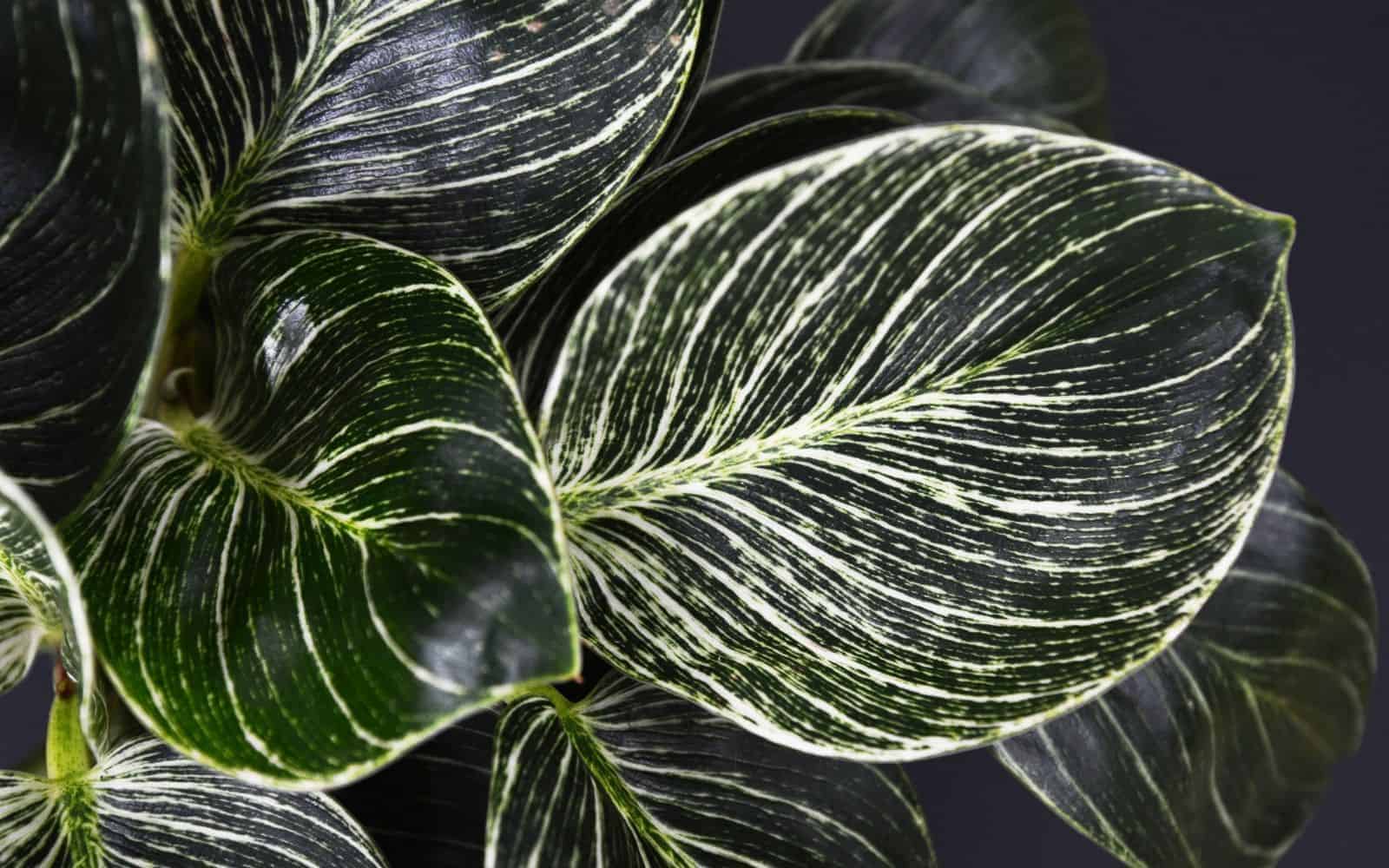
Commonly asked questions
Here are some common questions from Birkin plant parents:
How fast does a Birkin grow?
Philodendron Birkin grows fairly slowly. It might take a few years before it reaches its full potential height.
How much sunlight does it need?
A Philodendron Birkin will require medium to bright indirect sunlight to stay happy and healthy. It can thrive in natural sunlight as well as fluorescent or LED light.
Why is my Birkin yellow?
Remember that Birkins do sometimes vary in color because they are mutated plants. However, if the leaves of your Birkin are turning yellow, that could indicate overwatering or that is suffering from an infestation of pests.
